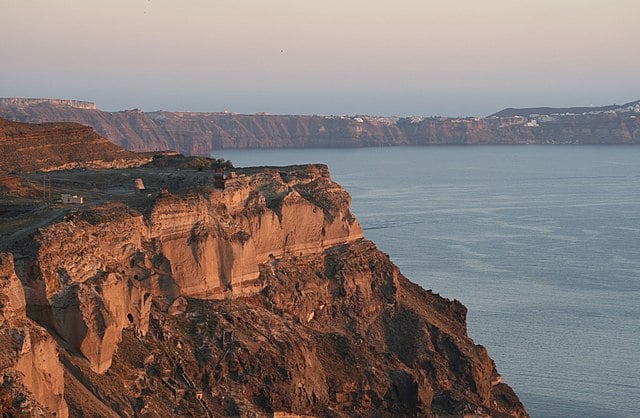
A team of researchers from Germany has successfully solved the mystery surrounding the 1650 eruption of the Santorini volcano in Greece. The team was led by Dr. Jens Karstens from the GEOMAR Helmholtz Centre for Ocean Research Kiel, who released their findings.
According to Dr. Karstens, the team aimed to understand how the tsunami “occurred at that time and why the volcano exploded so strongly.” Their findings suggest that both a landslide and an explosive eruption were responsible for the Santorini disaster. Results of the study were recently published in the journal Nature Communications.
Eyewitness accounts detail the dramatic aftermath of the eruption. The volcano, located about seven kilometers northeast of the Santorini island, spewed glowing rocks accompanied by fire, lightning and darkened skies. The ensuing receding water rushed towards the coastline, causing waves up to twenty meters high.
The disaster also caused a massive explosion that could be heard more than 100 kilometers away. In addition to this, a deadly cloud of poisonous gas claimed several lives. This historical data was preserved by a 19th-century French volcanologist, who detailed the events of the Kolumbo eruption.
Reminder of the day: The picturesque island of Santorini isn't located around a volcano. Is a volcano…with its peak collapsed and submerged into the sea.
*The eruption of 1.650 BECE was one of the largest in the last 10,000 years.
The volcano is still active.
🌋🏝 pic.twitter.com/9xYIATNRB3— Arys🏺🪶 (@ArysPan) October 7, 2022
Study Says Explosion Was Like “Uncorking a Bottle of Champagne”
The research team used 3D seismic techniques aboard the decommissioned research vessel Poseidon to create a three-dimensional image of the 18-meter-deep crater. The imaging displayed a crater measuring 2.5 kilometers in width and 500 meters in depth.
One side of the crater exhibited substantial deformation, suggesting significant slippage. By comparing different mechanisms and running computer simulations, the team determined that the tsunami was caused by a combination of a landslide and a volcanic explosion.
Further modeling showed that the explosion alone could not explain the observed tsunami height. However, when the researchers took the landslide into account, the data matched historical observations.
Dr. Karstens explained that Santorini volcano’s instability, pumice composition and steep slopes contributed to the intensity of the eruption. He noticed that due to enormous pressure “the effect was like uncorking a bottle of champagne.” He added that the erruption “had been going on for several weeks, lava was continuously ejected.”
This study provides essential insights for establishing monitoring programs for active submarine volcanic activities. These programs include SANTORY, led by co-author Prof. Dr. Paraskevi Nomikou of the National and Kapodistrian University of Athens (NKUA).
Dr. Karstens said he hopes to use the findings to develop innovative approaches to monitor volcanic disturbances in real time. He called it a dream if the results lead to an early warning system.
See all the latest news from Greece and the world at Greekreporter.com. Contact our newsroom to report an update or send your story, photos and videos. Follow GR on Google News and subscribe here to our daily email!



